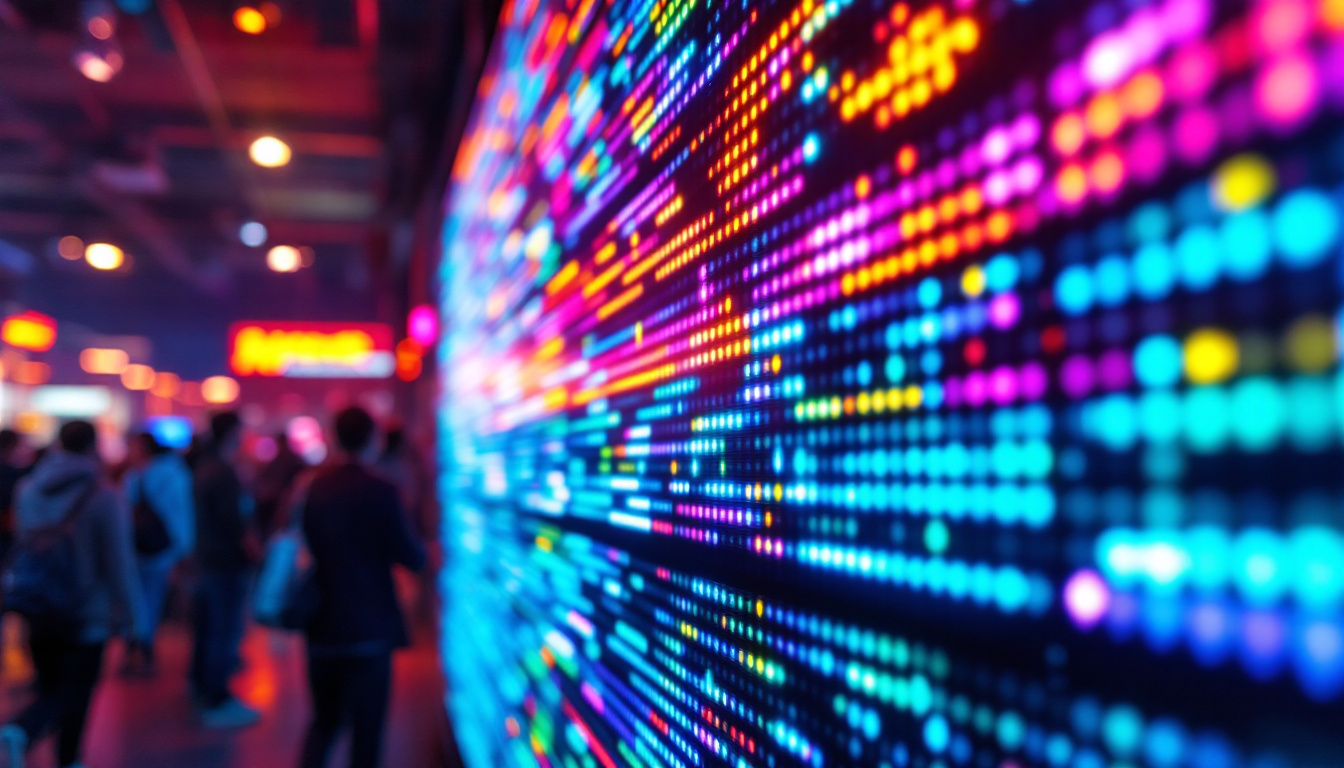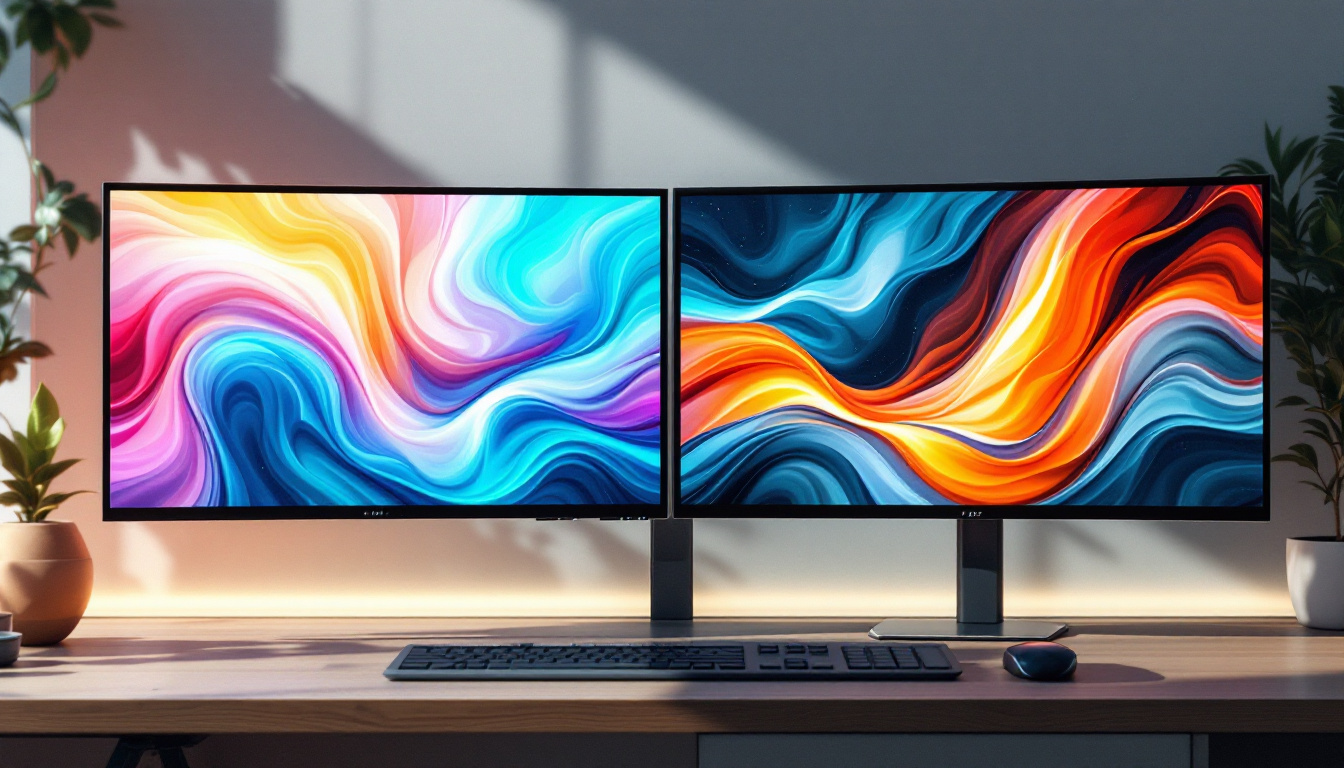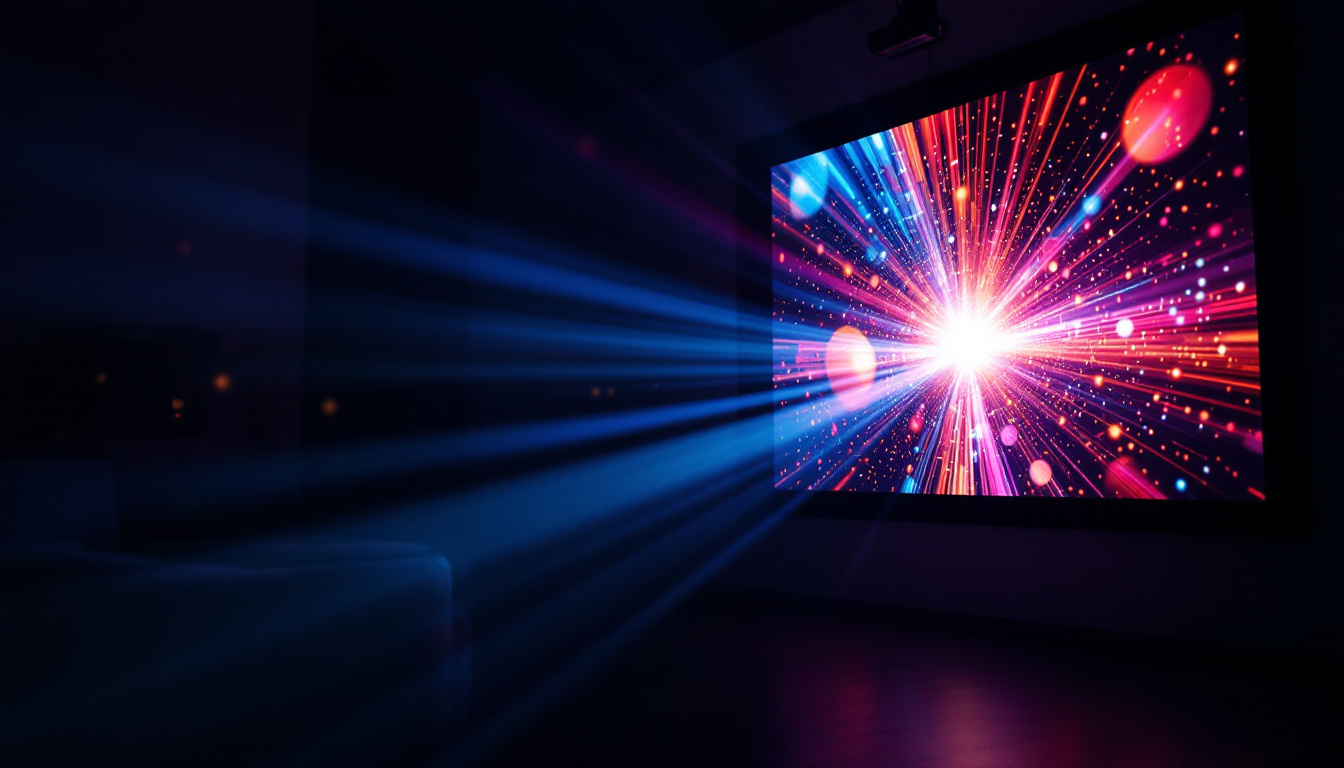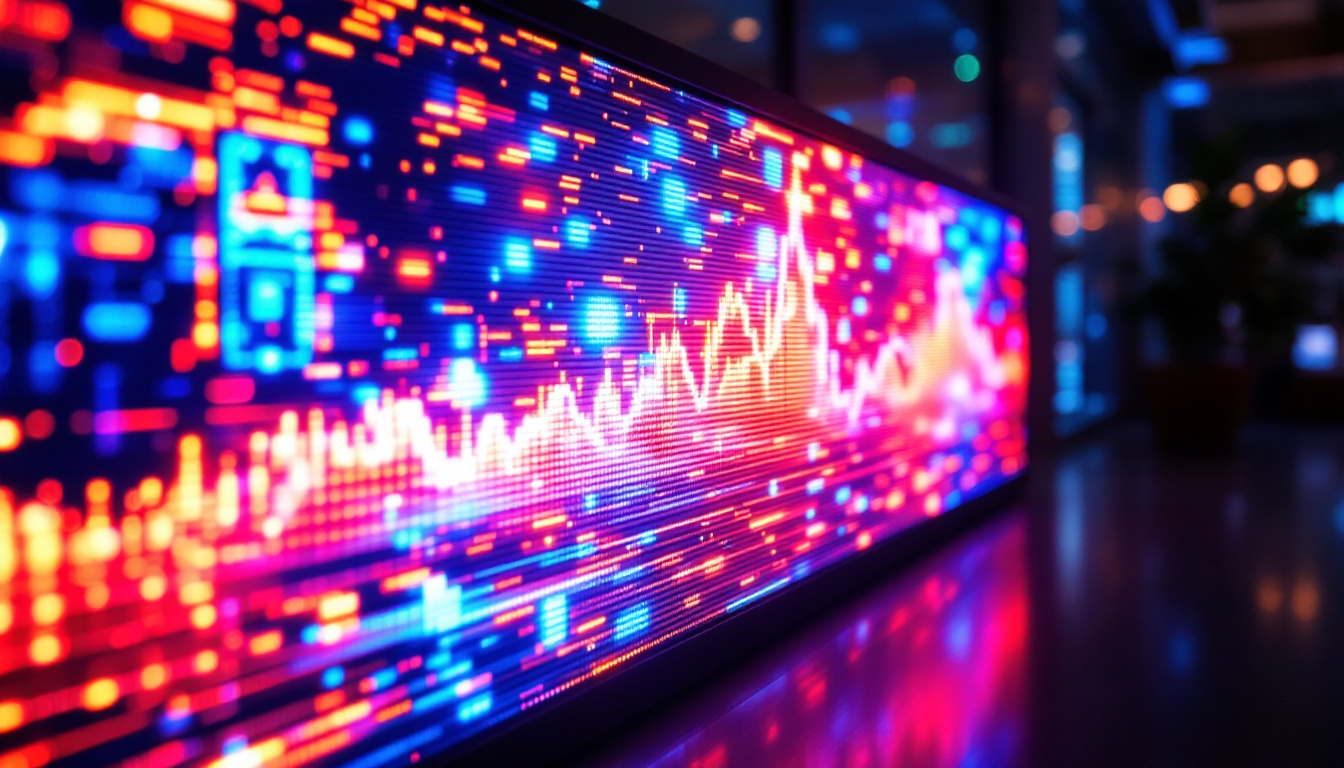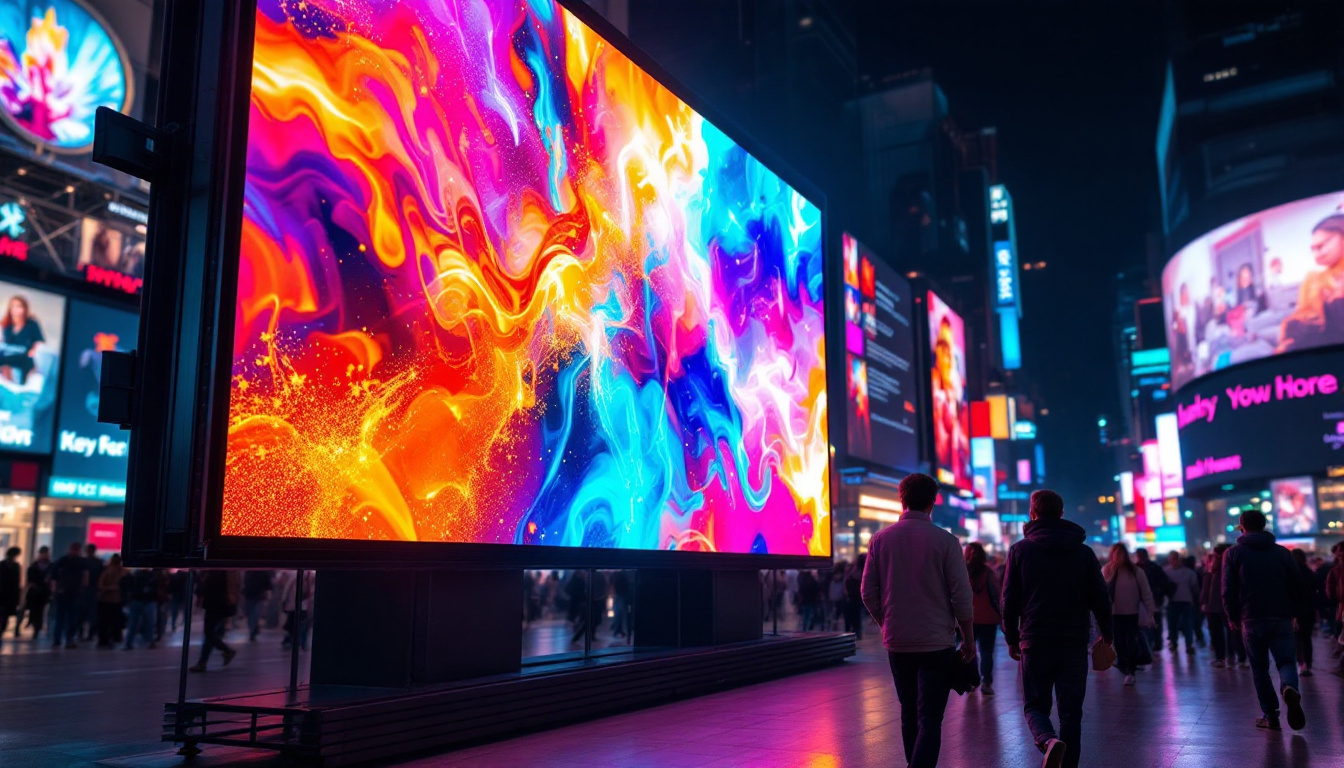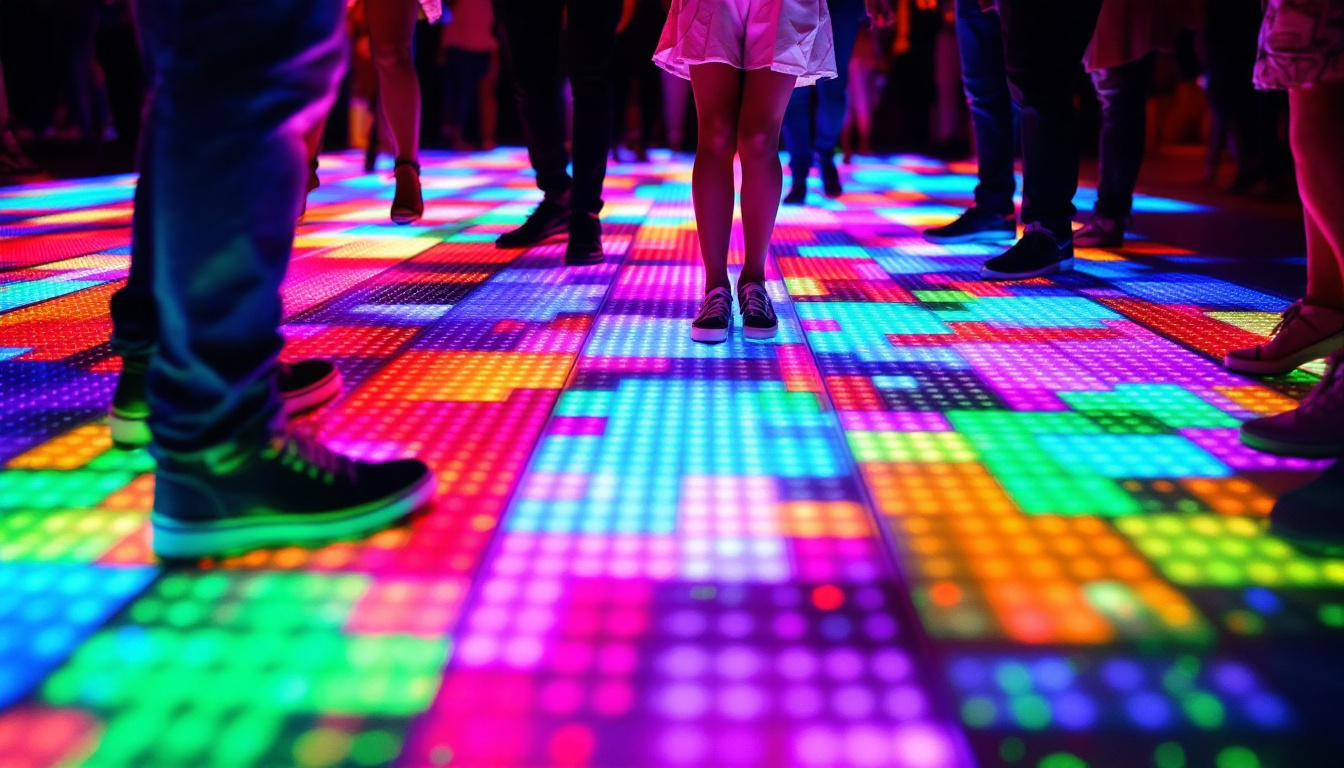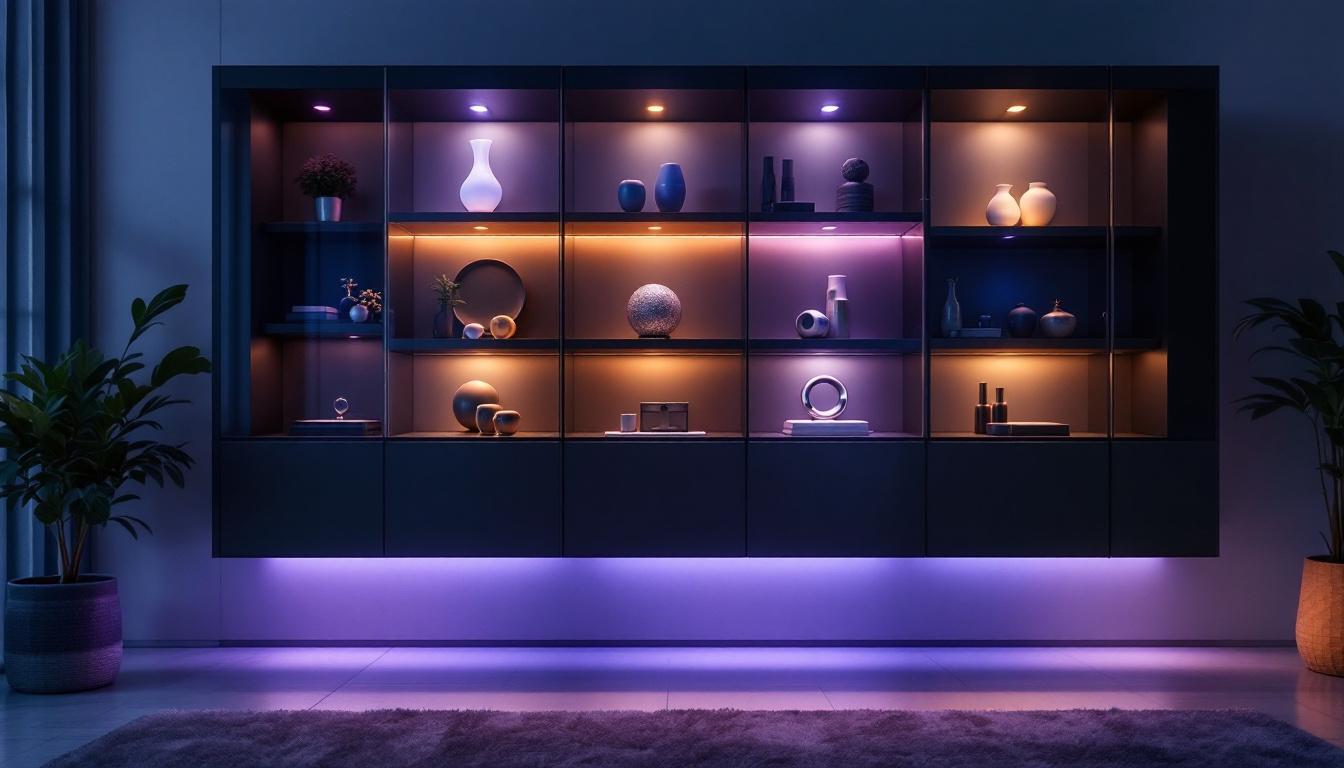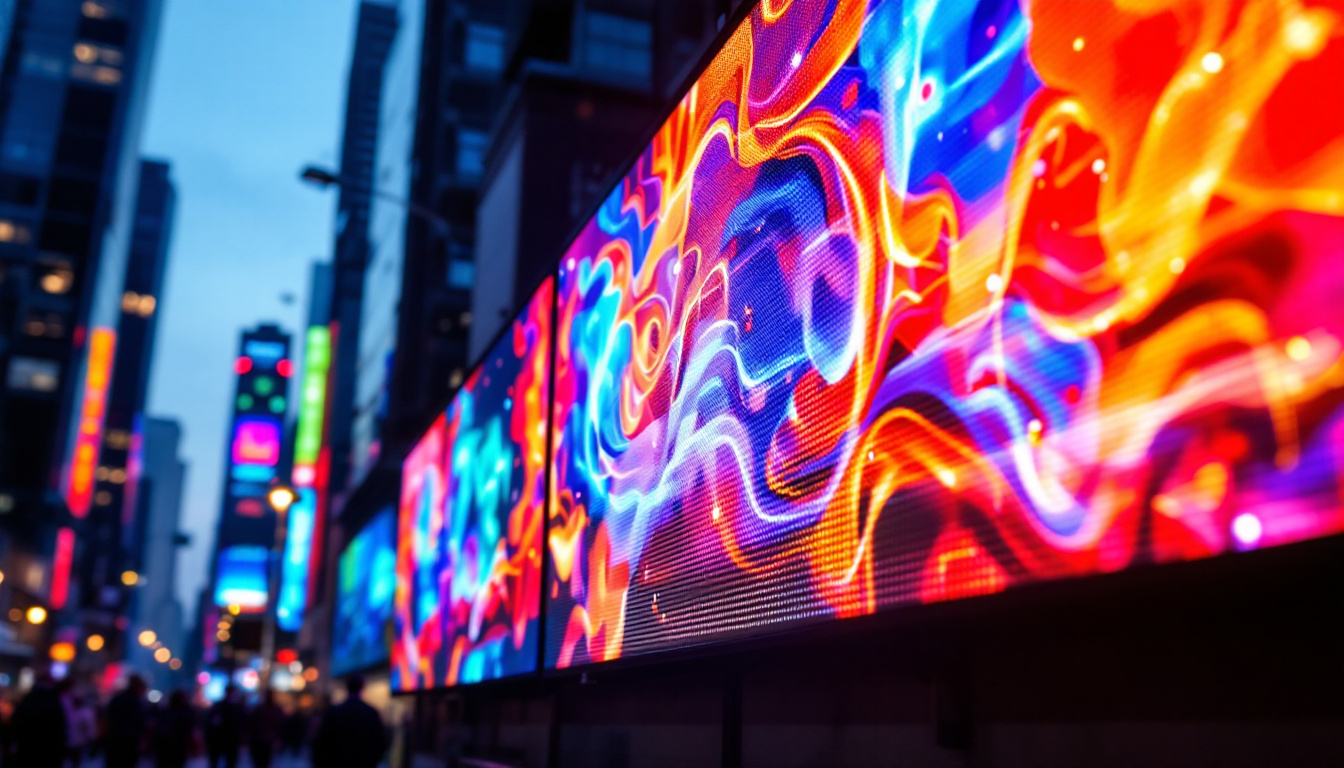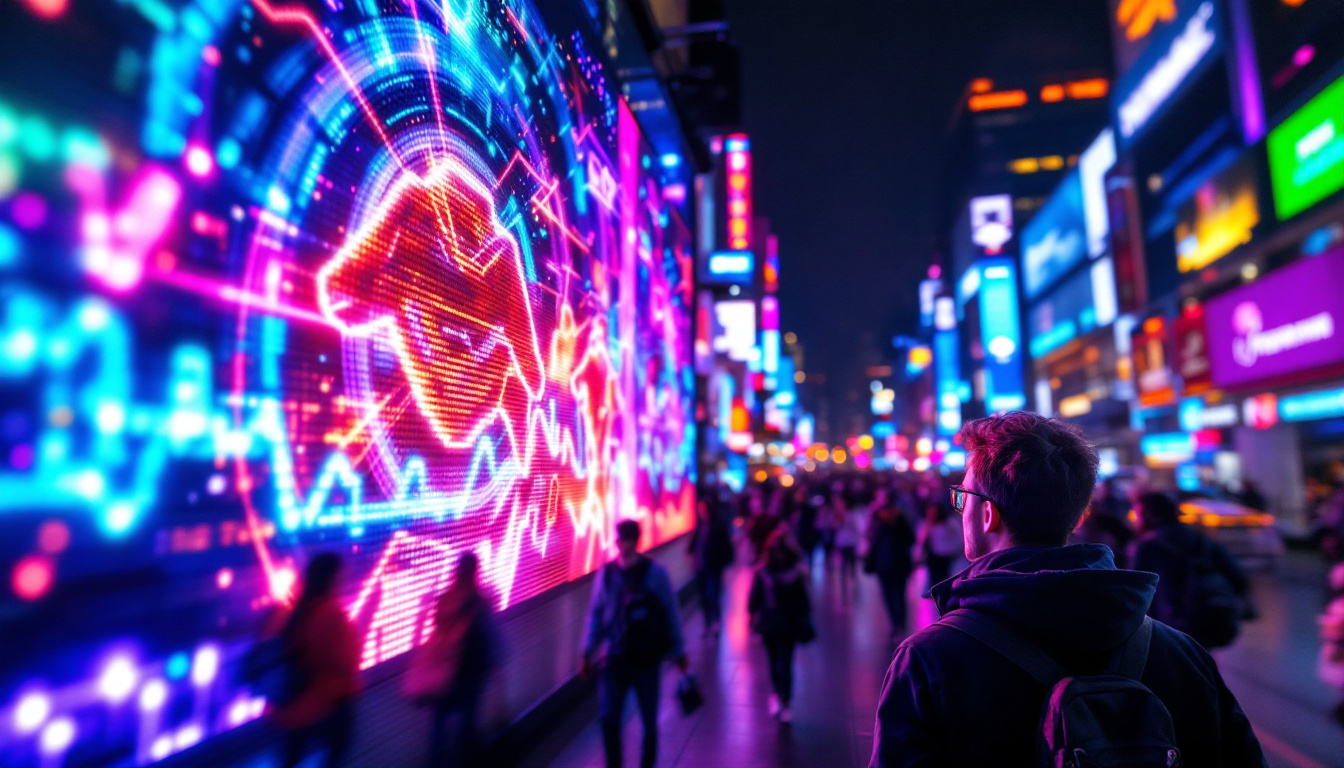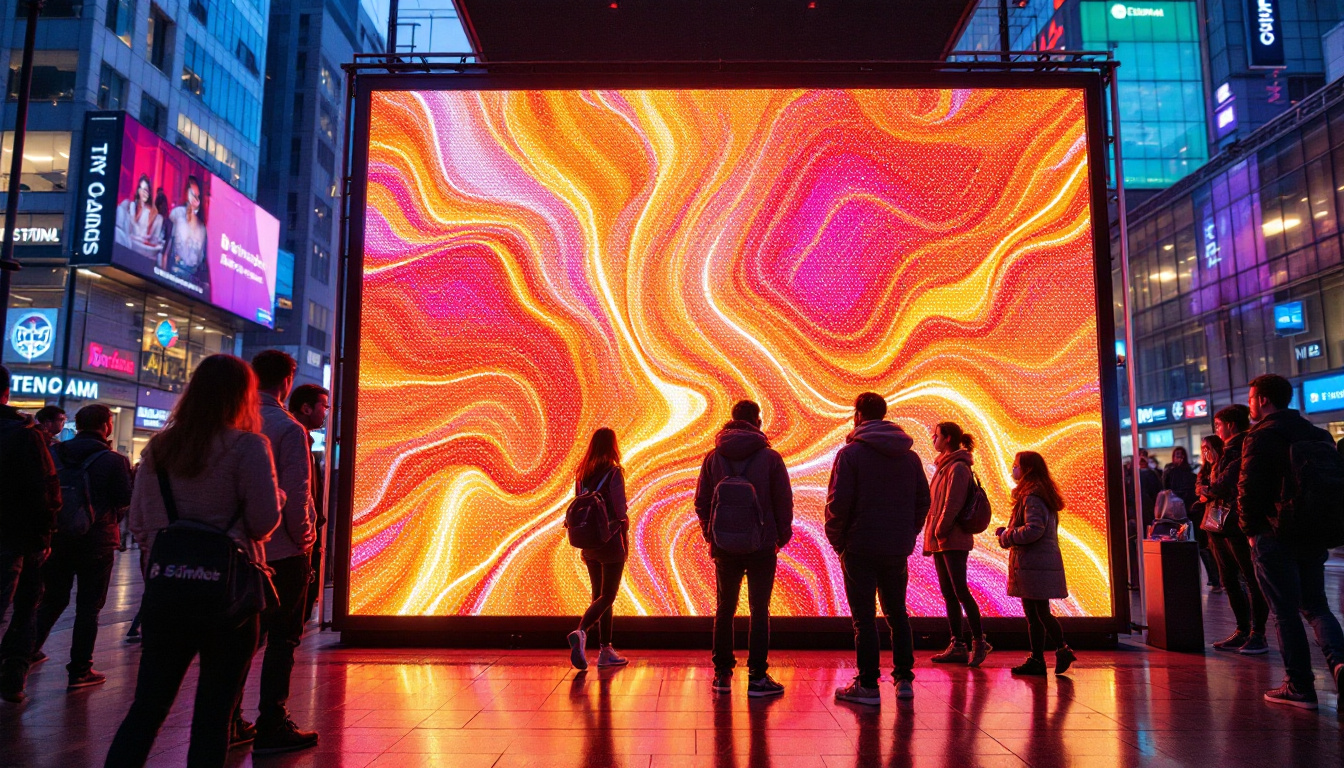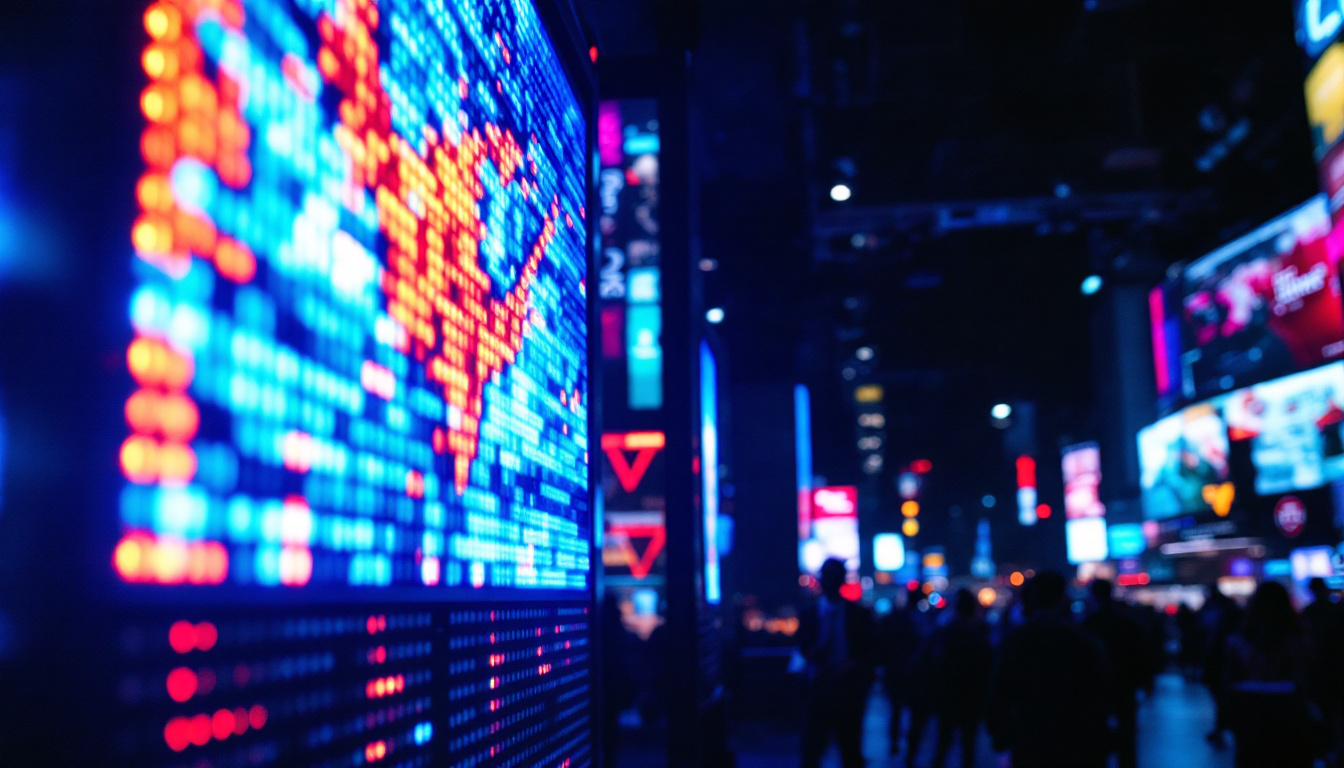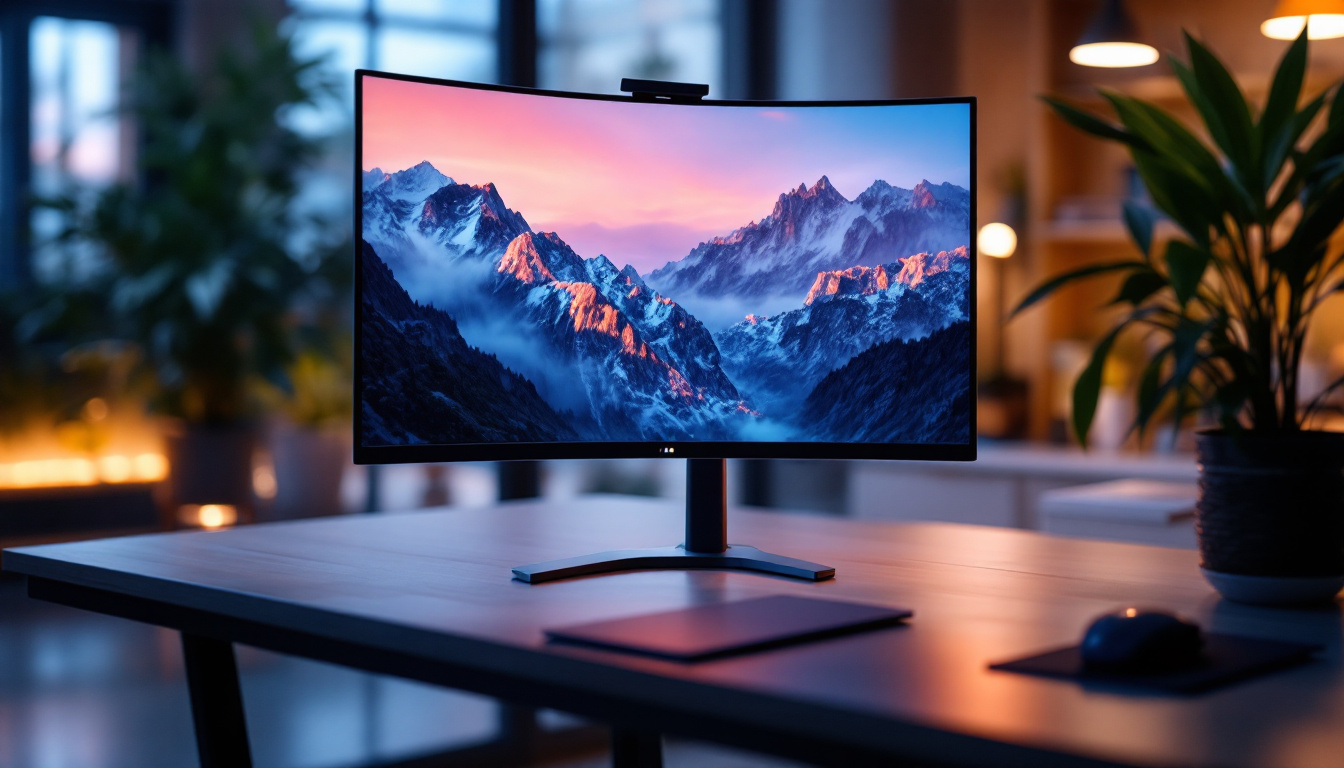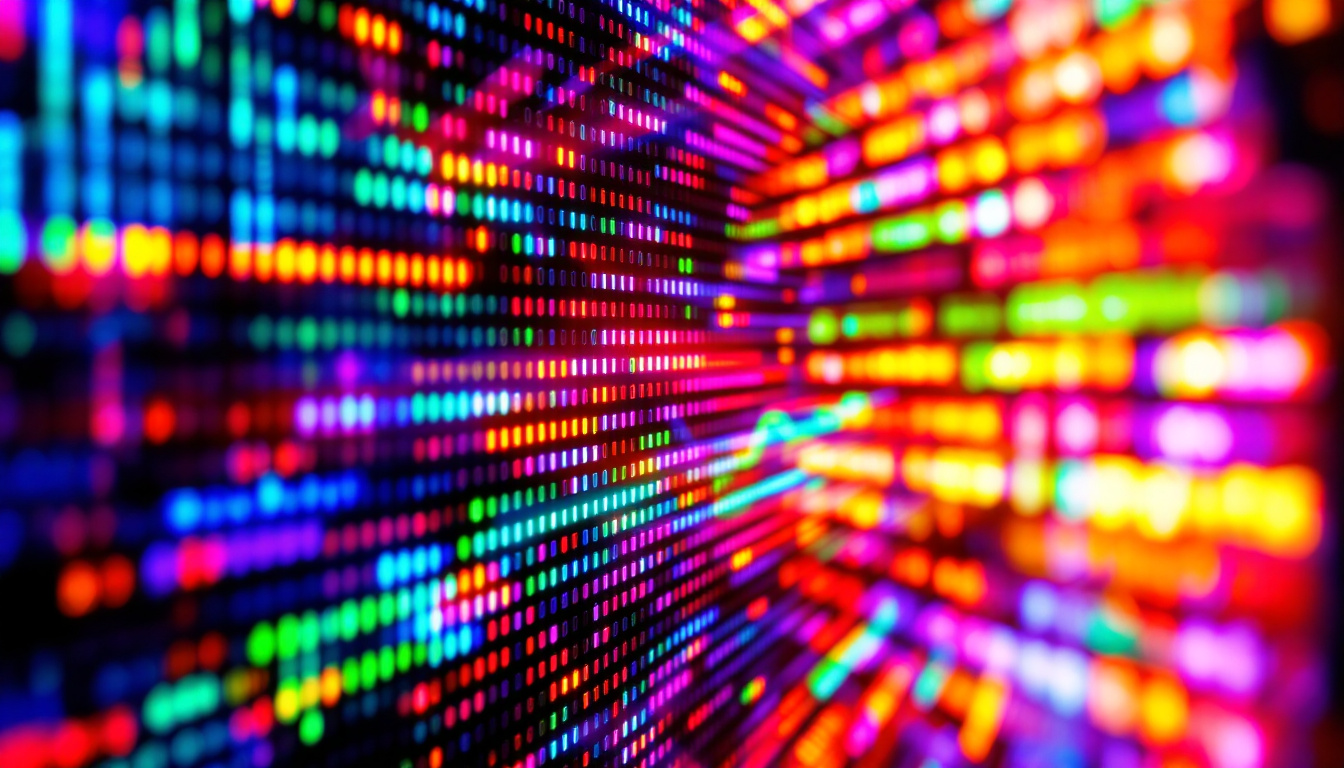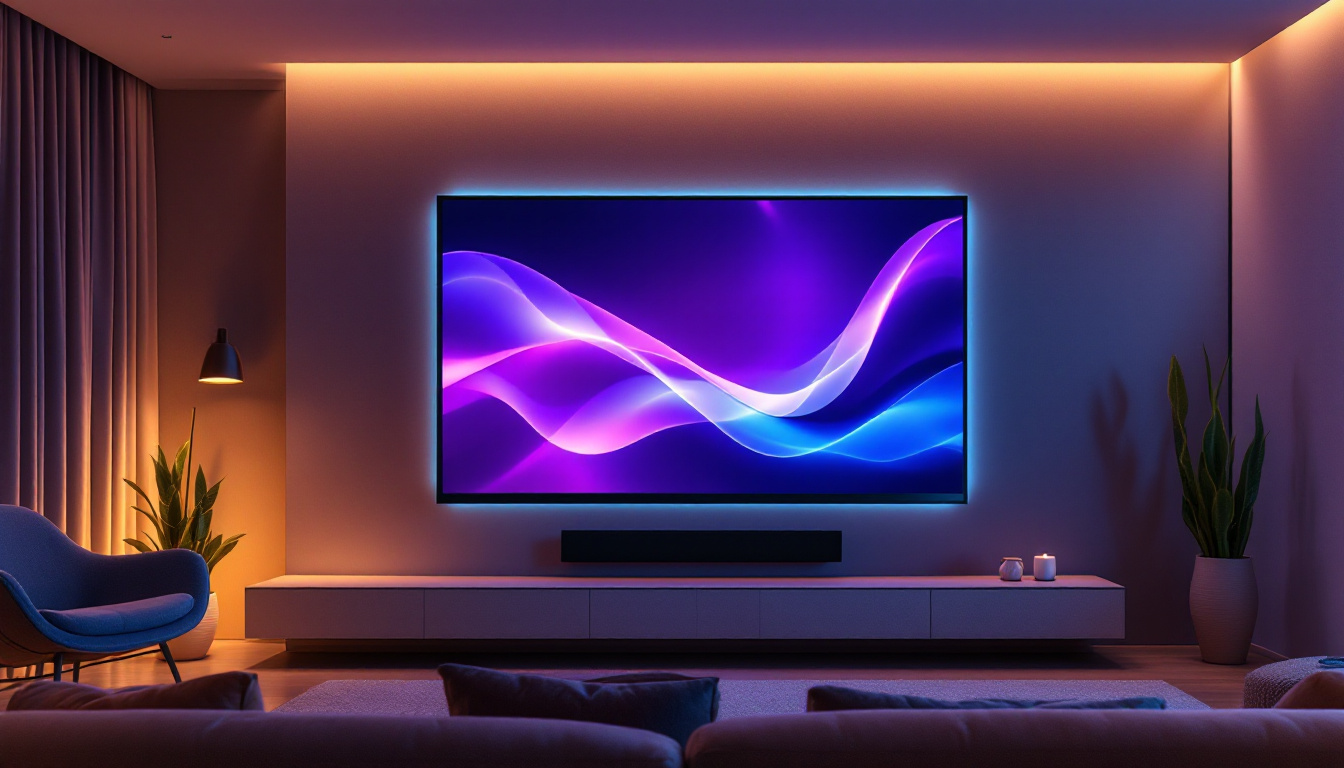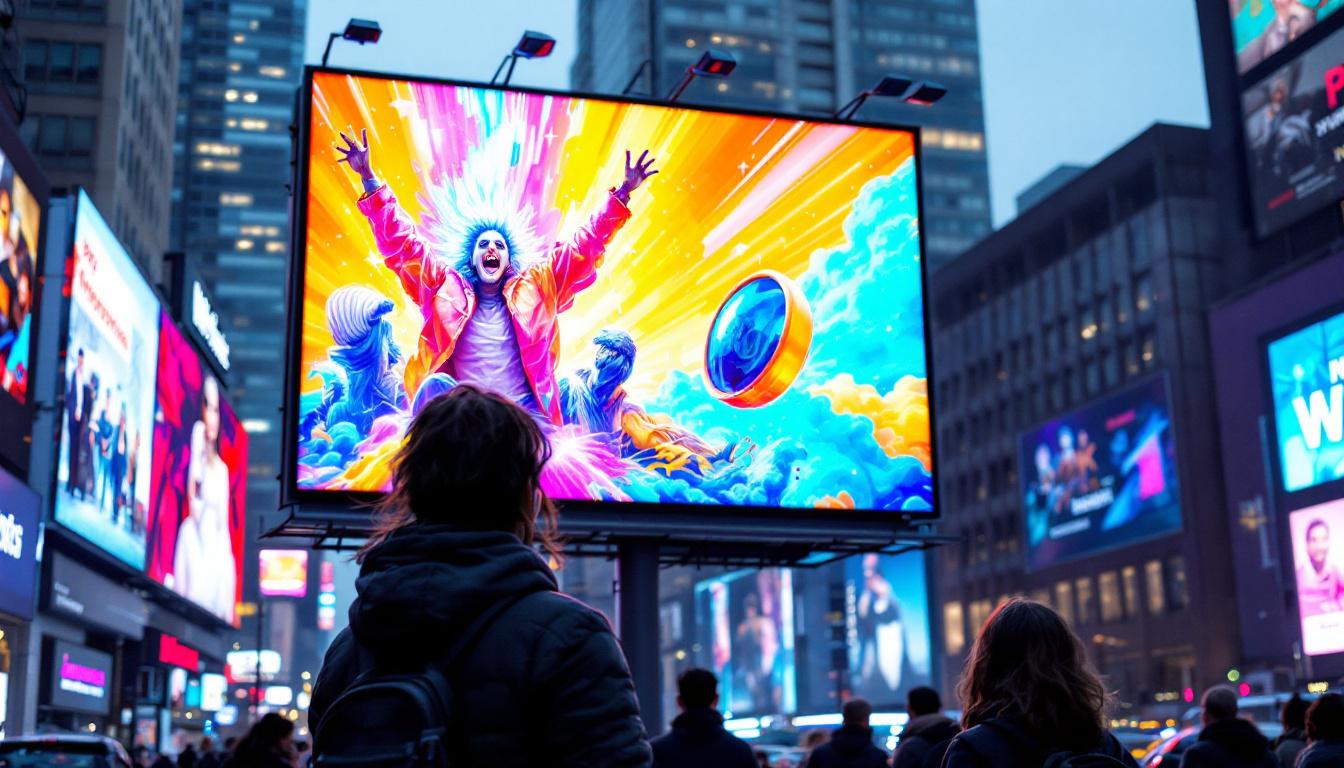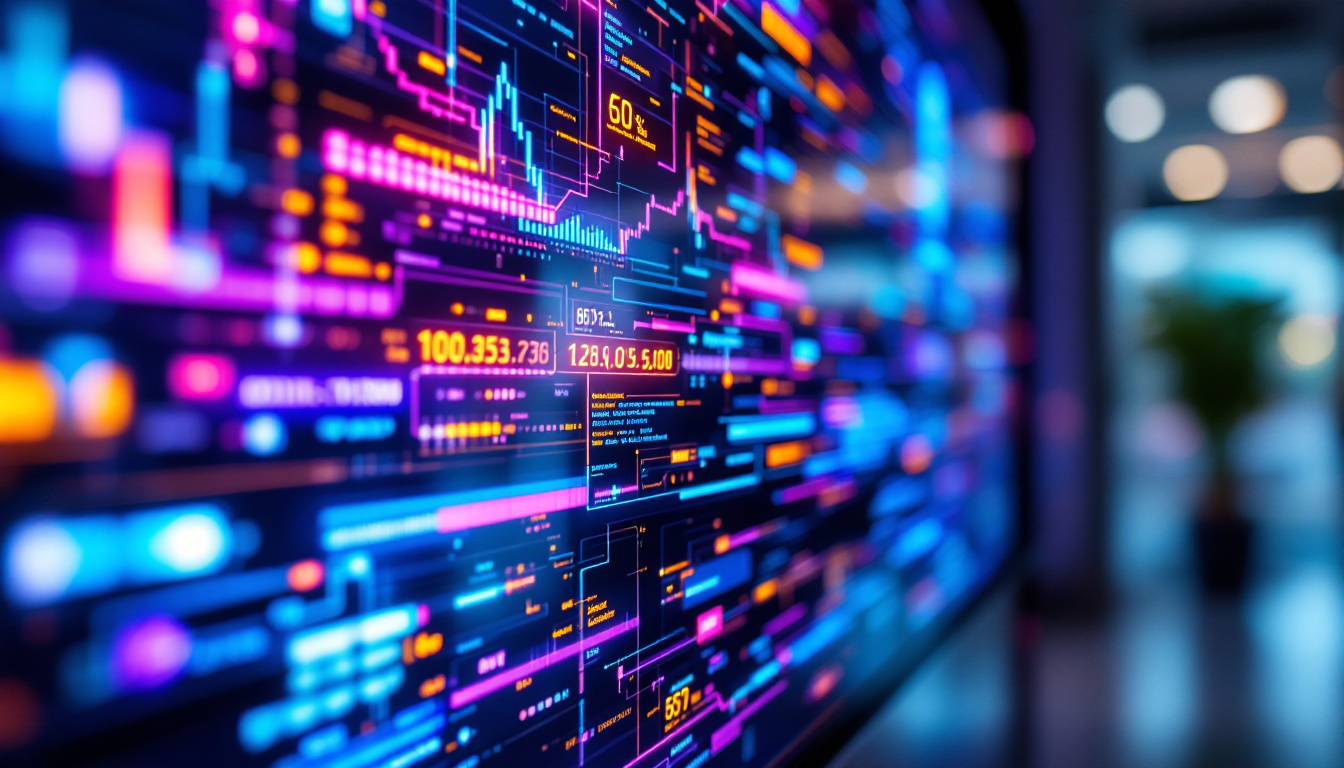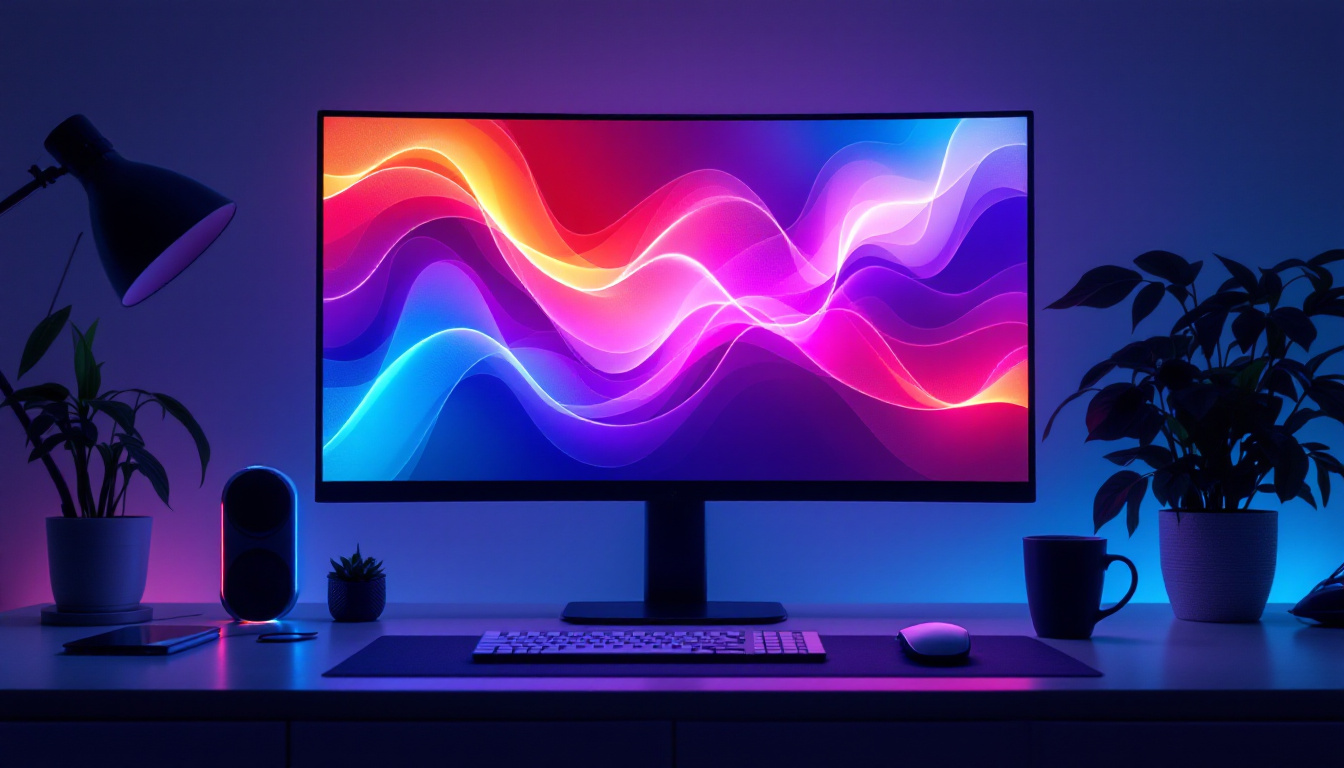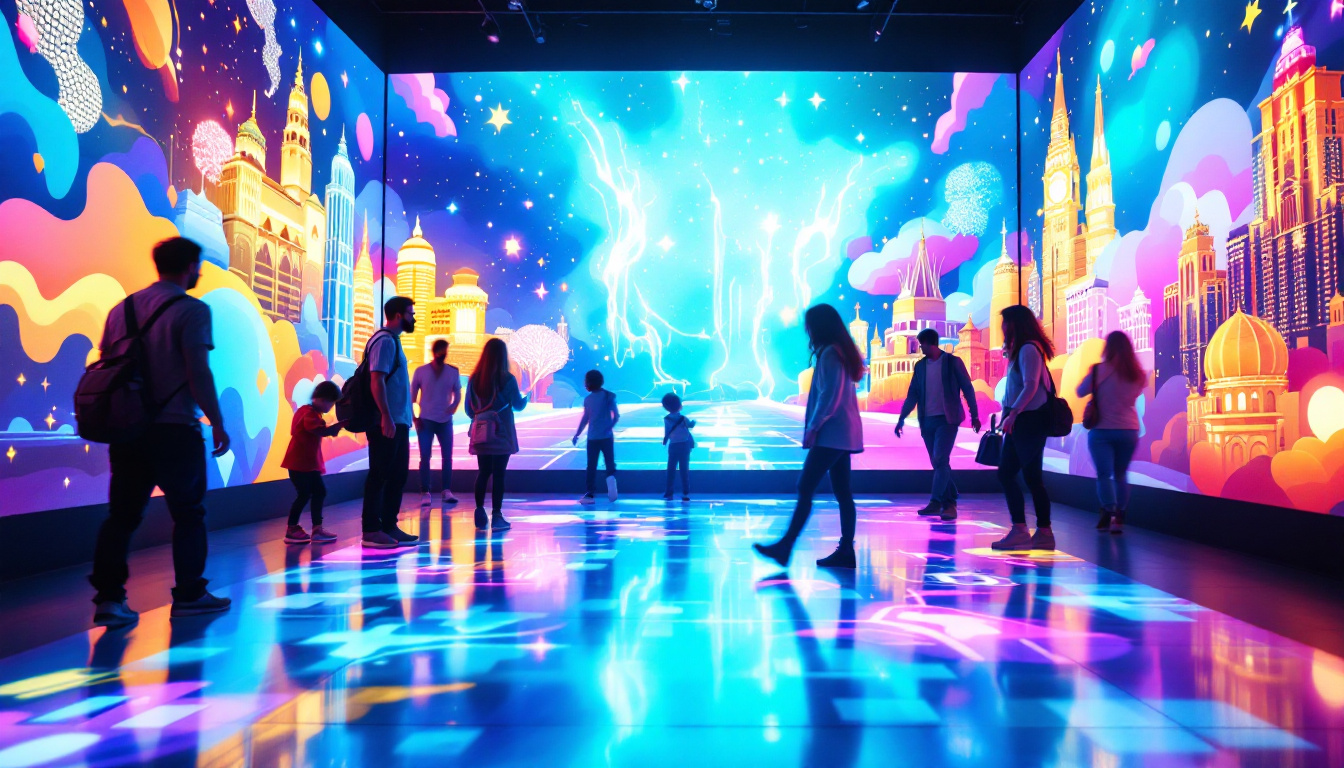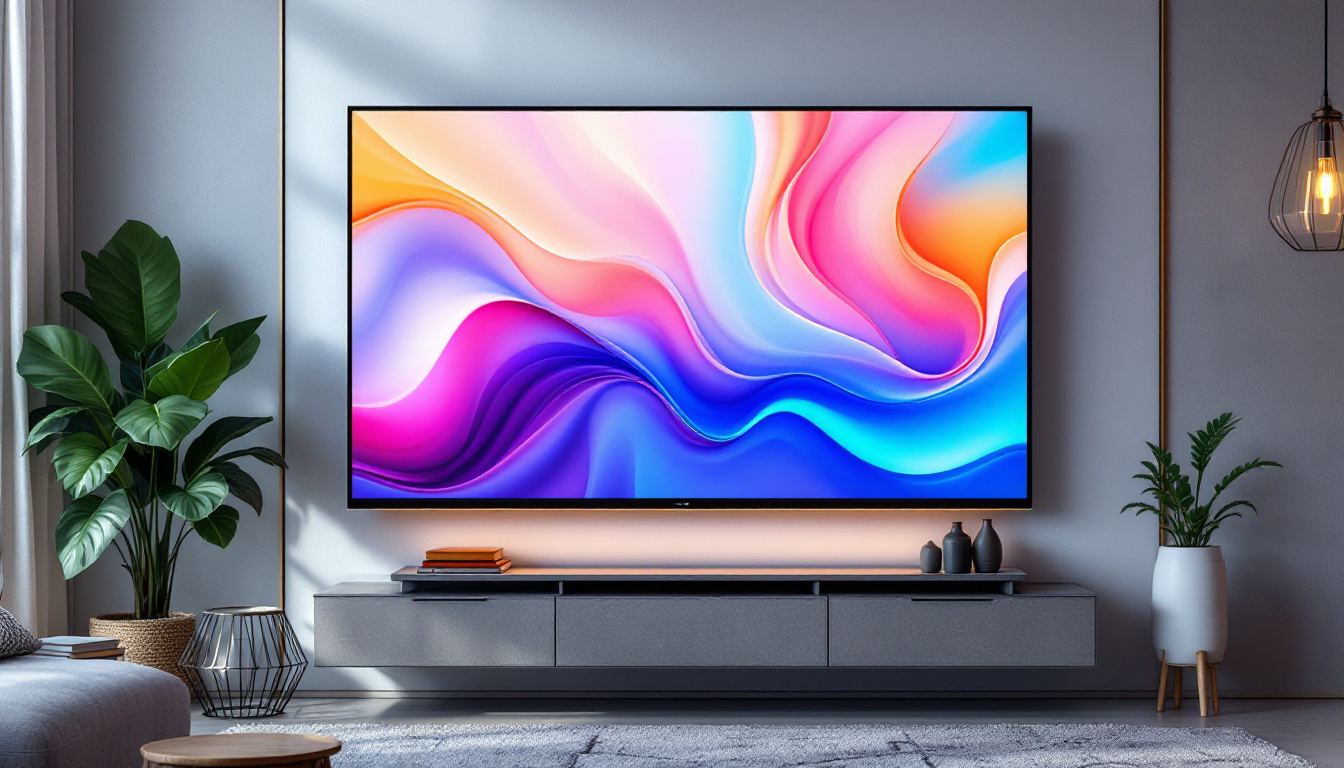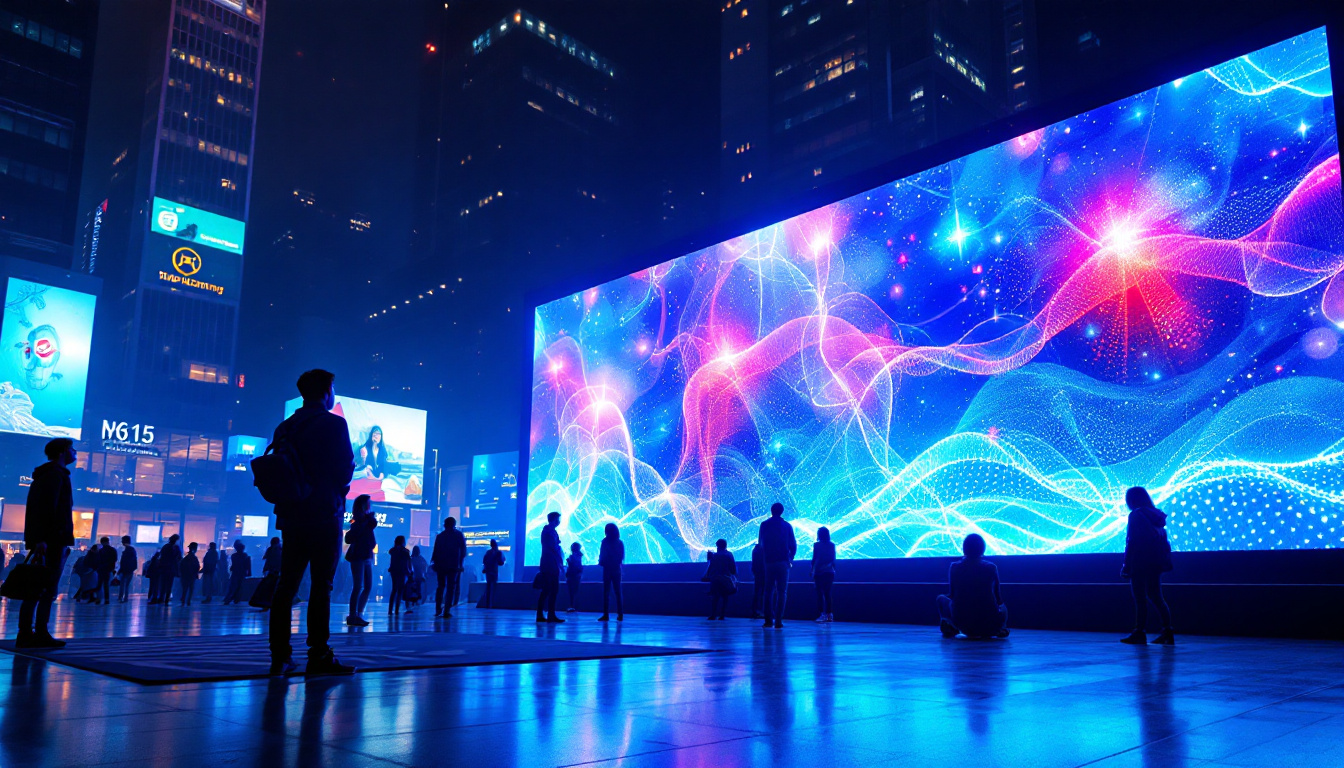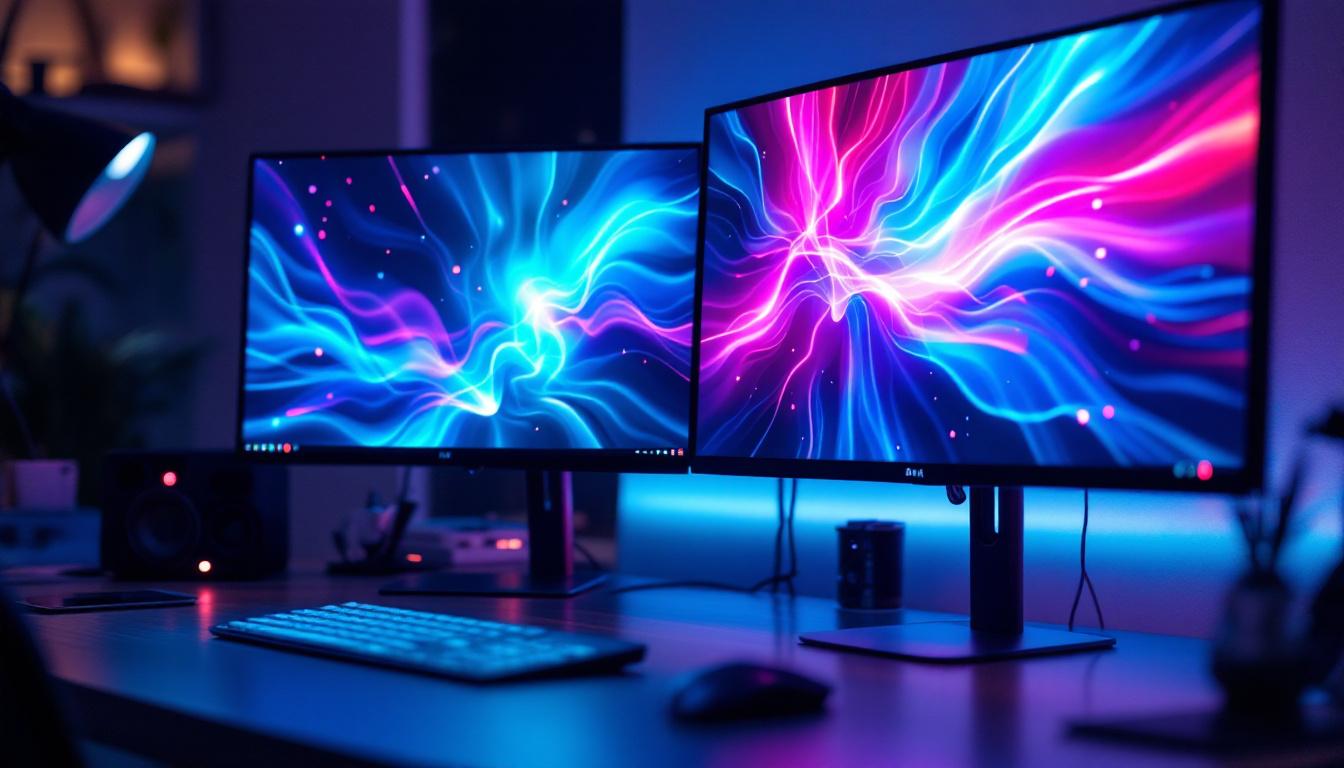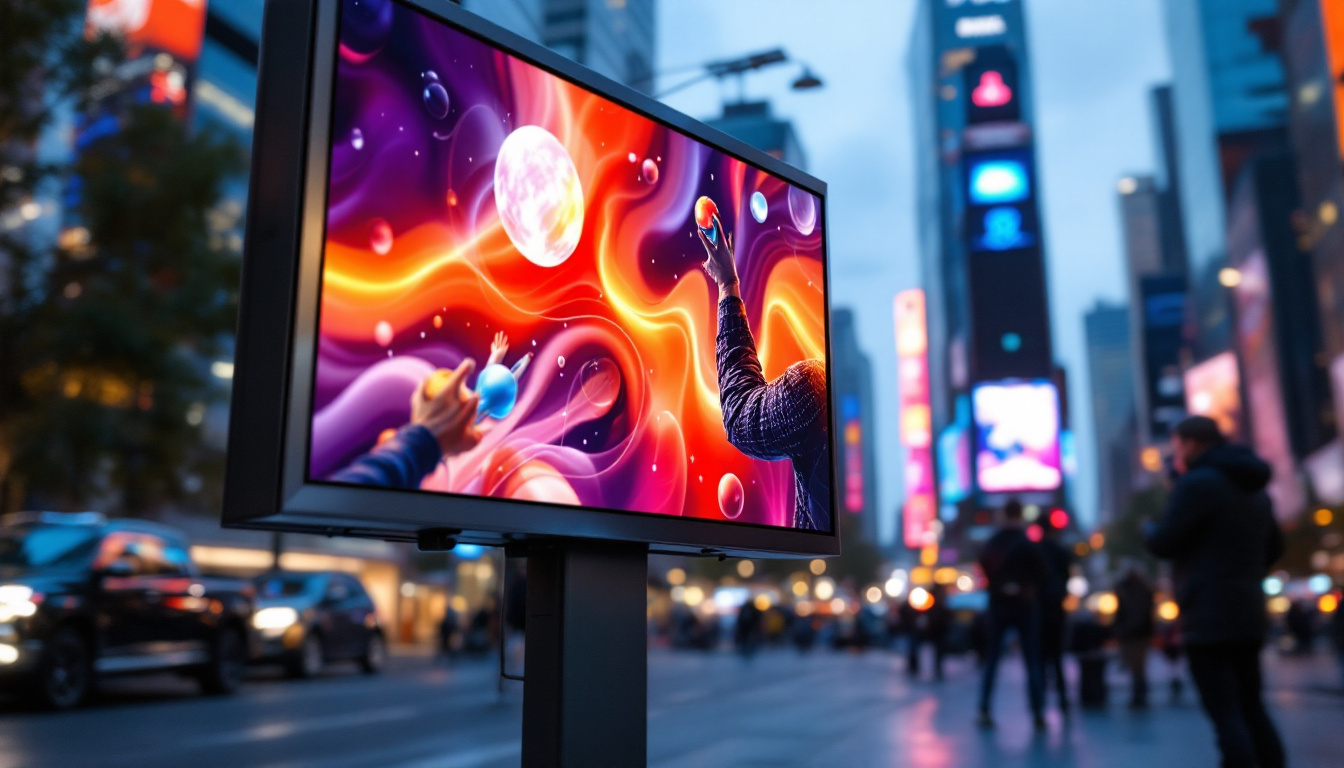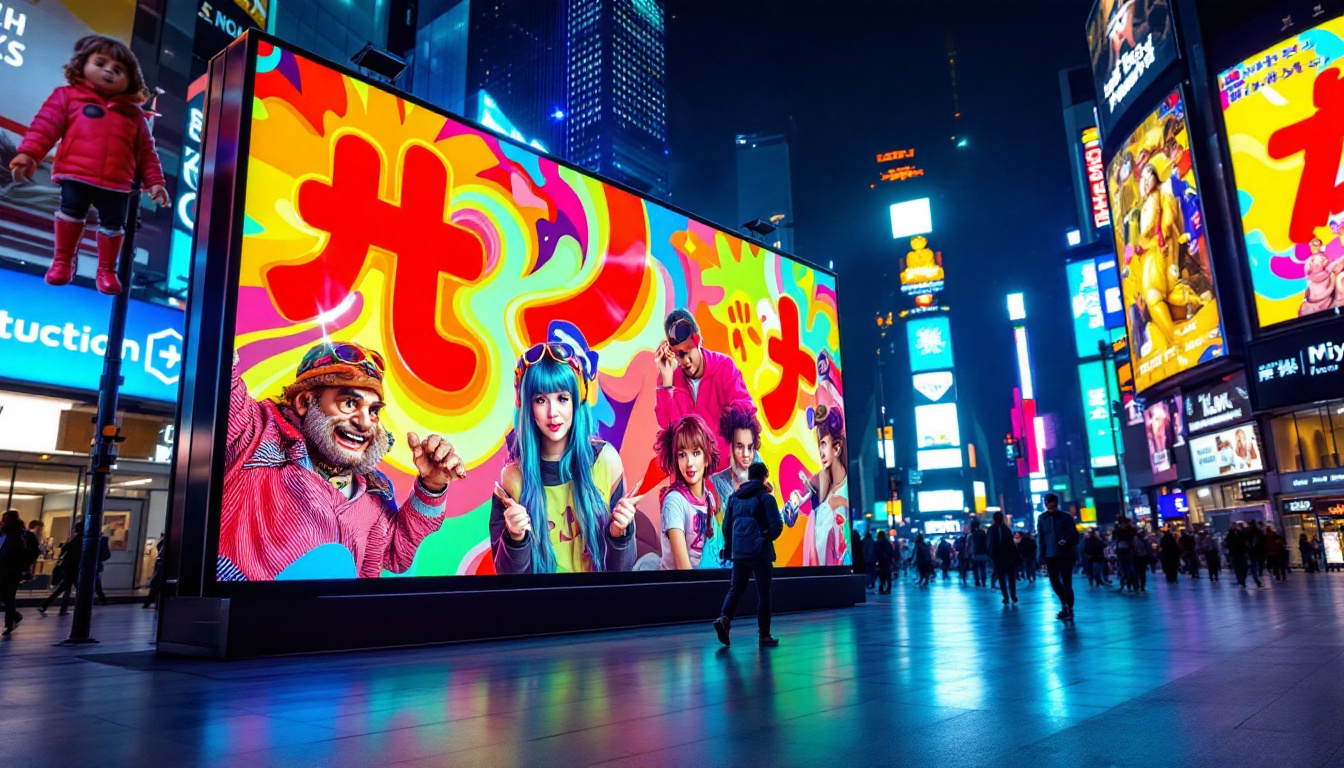In the world of digital advertising and information dissemination, LED grid screens have emerged as a revolutionary technology. These displays are not just about brightness and color; they represent a significant advancement in visual communication. This article delves into the intricacies of LED grid screens, exploring their functionality, applications, and the technology that powers them.
Understanding LED Technology
LED, or Light Emitting Diode, technology has transformed the way we perceive visual content. Unlike traditional display technologies, LEDs offer several advantages that make them ideal for a variety of applications.
How LEDs Work
At the core of LED technology is the semiconductor material that emits light when an electric current passes through it. This process is known as electroluminescence. LEDs are incredibly efficient, consuming less power than traditional incandescent bulbs while providing brighter and more vibrant colors.
LEDs can be arranged in various configurations, allowing for the creation of grid screens that can display complex images and videos. The arrangement of these diodes in a grid format enables the display of high-resolution content, making them suitable for both indoor and outdoor use. This versatility has led to their adoption in everything from large-scale billboards to small electronic devices, showcasing their adaptability across different platforms and environments.
Advantages of LED Displays
One of the most significant advantages of LED displays is their energy efficiency. They consume less power compared to conventional displays, resulting in lower operational costs. Additionally, LED screens have a longer lifespan, often lasting over 50,000 hours, which reduces the need for frequent replacements. This longevity not only benefits consumers but also contributes to a more sustainable approach to technology, as fewer resources are needed for manufacturing and disposal.
Another benefit is their brightness and visibility. LED displays can be seen clearly in various lighting conditions, making them ideal for outdoor advertising. Their ability to produce vibrant colors and high contrast ratios enhances the viewer’s experience, making content more engaging. Furthermore, the rapid response time of LEDs allows for dynamic content to be displayed without any motion blur, which is particularly advantageous for video presentations and live events. This capability has made LED technology a preferred choice in arenas, concert venues, and sports stadiums, where capturing audience attention is crucial.
Moreover, LED technology has paved the way for innovations such as smart lighting systems and interactive displays. These advancements allow for the integration of sensors and connectivity features, enabling lights to adjust based on ambient conditions or user interactions. Such developments not only enhance user experience but also promote energy conservation, aligning with global efforts toward reducing carbon footprints. As the technology continues to evolve, we can expect even more exciting applications that leverage the unique properties of LEDs in ways that enhance our daily lives.
Types of LED Grid Screens
LED grid screens come in various types, each designed for specific applications. Understanding these types can help businesses choose the right display for their needs.
Indoor LED Displays
Indoor LED displays are typically used in environments such as shopping malls, conference rooms, and theaters. They are designed to provide high-resolution images and videos at close viewing distances. The pixel pitch, which refers to the distance between the center of one LED to the center of the next, is smaller in indoor displays, allowing for more detailed visuals.
These displays often feature a softer brightness that is comfortable for indoor settings, ensuring that viewers can enjoy content without straining their eyes. They are also versatile, capable of displaying everything from advertisements to live event feeds.
Outdoor LED Displays
Outdoor LED displays are built to withstand harsh weather conditions while delivering high visibility. These screens are typically larger and have a higher pixel pitch, which allows for visibility from greater distances. The brightness levels are significantly higher than indoor displays to combat sunlight and other environmental factors.
Common applications for outdoor LED displays include billboards, stadium screens, and public information displays. Their durability and visibility make them an excellent choice for advertisers looking to capture the attention of passersby.
Transparent LED Displays
transparent LED displays are an innovative addition to the LED technology landscape. These screens allow light to pass through while displaying content, making them ideal for storefronts and exhibitions. They create a unique visual effect, allowing customers to see both the product behind the screen and the content being displayed.
This type of display is particularly popular in retail environments, where it can enhance the shopping experience by providing information without obstructing the view of merchandise. Transparent LED displays are a testament to the versatility of LED technology and its ability to adapt to modern design needs.
Applications of LED Grid Screens
The versatility of LED grid screens allows them to be used in various sectors, each benefiting from the unique features of this technology.
Advertising and Marketing
One of the most prominent applications of LED grid screens is in advertising. Businesses utilize these displays to showcase promotions, product launches, and brand messages. The dynamic nature of LED displays allows for changing content in real time, making it easier to engage with customers and adapt to market trends.
Outdoor LED billboards have become a staple in urban environments, providing advertisers with a platform to reach a vast audience. The ability to display high-quality visuals ensures that advertisements capture attention and leave a lasting impression.
Entertainment and Events
LED grid screens play a crucial role in the entertainment industry, particularly in concerts, festivals, and sporting events. These displays are often used as backdrops for performances, providing stunning visuals that enhance the overall experience for attendees.
In sports arenas, large LED screens are used to display live feeds, replays, and advertisements, ensuring that fans have an immersive experience. The ability to deliver high-definition content in real time is invaluable in creating an engaging atmosphere.
Information Dissemination
Public information displays, such as those found in transportation hubs and public spaces, utilize LED grid screens to convey important messages. These displays can provide real-time updates on schedules, directions, and emergency alerts, ensuring that the public remains informed.
In educational settings, LED displays are increasingly used to share information with students and staff, enhancing communication within institutions. Their adaptability makes them suitable for various informational purposes.
Choosing the Right LED Grid Screen
Selecting the right LED grid screen involves several considerations, ensuring that the chosen display meets the specific needs of the application.
Determining Pixel Pitch
Pixel pitch is a critical factor when choosing an LED display. It influences the resolution and clarity of the images displayed. A smaller pixel pitch results in higher resolution, making it suitable for close viewing distances, such as in indoor settings. Conversely, a larger pixel pitch is more appropriate for outdoor displays viewed from a distance.
Understanding the viewing distance and the intended use of the display can help in making an informed decision regarding pixel pitch.
Brightness Levels
Brightness is another essential consideration, especially for outdoor LED displays. The brightness level is measured in nits, and higher values are necessary to ensure visibility in direct sunlight. Indoor displays, on the other hand, require lower brightness levels to create a comfortable viewing experience.
Evaluating the environment where the display will be installed can guide the selection of appropriate brightness levels.
Durability and Maintenance
Durability is paramount for outdoor LED displays, which must withstand various weather conditions. Look for displays with robust enclosures and weather-resistant features. Additionally, consider the maintenance requirements of the display, as some models may require more frequent servicing than others.
Choosing a reliable manufacturer with a good track record can also ensure that the display will perform well over time.
The Future of LED Grid Screens
The future of LED grid screens looks promising, with advancements in technology continually enhancing their capabilities. As industries evolve, the demand for high-quality visual displays is expected to grow.
Innovations in Technology
Emerging technologies, such as flexible LED displays and improvements in color accuracy, are set to change the landscape of LED grid screens. Flexible displays can be curved or shaped to fit unique designs, allowing for more creative applications in architecture and advertising.
Additionally, advancements in artificial intelligence and machine learning are paving the way for smarter displays that can adapt content based on audience engagement and preferences.
Sustainability Considerations
As environmental concerns continue to rise, the LED industry is focusing on sustainability. Manufacturers are exploring eco-friendly materials and energy-efficient technologies to reduce the carbon footprint of LED displays. This shift towards sustainability is likely to influence consumer choices and industry standards in the coming years.
Integration with Smart Technologies
The integration of LED grid screens with smart technologies is another trend to watch. With the rise of the Internet of Things (IoT), LED displays can be connected to networks, allowing for real-time data updates and interactive content. This capability enhances user engagement and opens new avenues for advertising and information dissemination.
Conclusion
LED grid screens represent a significant advancement in visual communication, offering unparalleled brightness, efficiency, and versatility. Their applications span various industries, from advertising to entertainment, making them a valuable tool for businesses and organizations.
As technology continues to evolve, the future of LED displays looks bright. Innovations in design, sustainability, and smart technology integration will shape the next generation of LED grid screens, ensuring they remain at the forefront of visual communication.
Investing in the right LED display can enhance engagement, improve information dissemination, and create memorable experiences for audiences. Understanding the technology and its applications is key to leveraging the full potential of LED grid screens in today’s digital landscape.
Explore Cutting-Edge LED Displays with LumenMatrix
Ready to elevate your visual communication with the latest in LED display technology? LumenMatrix is at the forefront of innovation, offering a wide range of LED display solutions tailored to your needs. From captivating Indoor LED Walls to dynamic Outdoor LED Displays, and from versatile Vehicle LED Displays to sleek LED Posters, our products are designed to make your brand stand out. Discover how our LED Sports Displays, interactive Floor LED Displays, and Custom LED solutions can transform your space. Embrace the future with our All-in-One and Transparent LED Displays. Don’t just share your message—make an impact with clarity and vibrancy. Check out LumenMatrix LED Display Solutions and start creating unforgettable visual experiences today.

